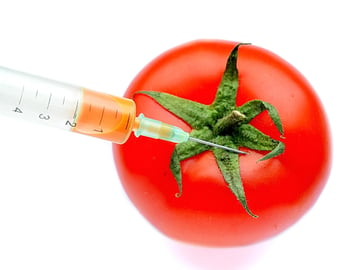It’s time to ask the hard question: Is your company prepared for an audit or food-related incident?
Food regulatory requirements have shifted in nature; now, rather than primarily focusing on responding to food safety incidents, there is an increased emphasis on food safety prevention. Fortunately, there are a variety of tools to help food and beverage manufacturers ensure that they are compliant with food safety regulations; the key is preparing for food safety audits in advance. Audits can occur in-house by a designated team or by an external auditor, with the purpose being to identify areas for improvement to processes and systems.
Under FDA guidelines and FSMA regulations, food and beverage manufacturers must have a food safety plan in place that includes oversight and management of preventive controls established in each manufacturing facility. Regulatory audits and audit reports must be submitted to the FDA.
Although going through an audit can be a stressful event, a passing result will assure you and your team that your company has achieved a satisfactory level of food safety. A successful audit also lets consumers know that your company prioritizes their wellbeing.
In an article co-written by Konstantinos Kotsanopoulos and Ioannis Arvanitoyannis, The Role of Auditing, Food Safety, and Food Quality Standards in the Food Industry: A Review, the authors found that regular audits give consumers greater confidence in food and beverage companies. “In the U.S., a number of food safety issues have prompted questions in relation to the role of country‐of‐origin labeling, traceability, and food safety audits in consumers’ perceptions of food safety and quality.”
Preparing for a Successful Food Safety Audit
When preparing for a food safety audit, it is crucial to keep in mind the reason for the evaluation, which is to validate that your food safety systems are working effectively. The end goal is to prevent foodborne illness and to protect consumers from food that does not meet acceptable food safety standards. Starting with an in-house audit will give your food safety team valuable insights into areas that need improvement prior to a third-party auditor arriving at your facility.
- Establish a food safety audit team well in advance of the audit. Having an organized, well-trained staff to handle food safety audits is key to establishing a plan. Staff should have access and knowledge to gather proper documentation on policies and procedures during an audit.
- Organize documents for easy access. A large part of the auditing process is verification and validation that all food safety procedures are being adhered to during production. While it is possible for documents to be stored as hard copies, managing this information electronically is much more efficient, saving you both time and money. During an audit, swift access to requested documents will demonstrate that your staff knows how to effectively and easily manage contracts, certification records, etc. Recordkeeping systems should be in place to allow the auditor to request tracking of a lot number from the finished good all the way back to the supplier.
Some examples of documents reviewed during an audit are:
- Food Safety and Quality Policies and Procedures Manuel
- Product and Processing Specifications
- Policy and documentation of management and employee training
- Product Recall Manual and records documenting mock recalls
- HACCP plan, process, and documentation
- Supplier verification, certifications, and records
For a more detailed information about audits, the Food Safety Modernization Act provides guidelines for documentation and regulations.
Audit Evaluation and Next Steps
Conducting internal or external food safety audits help food and beverage companies identify areas for improvement and enable them to implement changes that will reduce the risk of a food safety incident for their brand.
Regardless of your audit experience, it is important that you clearly understand how the process works in order to achieve continuous improvements in your food safety program.
- A food safety audit is a real-time assessment of your facility and the food safety measures you have in place.
- The auditor will evaluate records, facility conditions, and operation processes on-site in the present moment.
- Should the audit uncover non-conformance, you should be prepared to take corrective action and make improvements to meet the requirements.
- Documented corrective actions and improvements should be reviewed by the team after the audit, regardless of the results of the food safety audit.
Technology that Prioritizes Food Safety
Disorganized records can lead to noncompliance during an audit; therefore, adopting the right technology is critical for achieving food supply chain transparency and ensuring you are prepared in the event of an audit, a recall, or any other type of product incident.
FoodLogiQ’s software solutions make it easier to meet FSMA and regulatory compliance. You can stay on top of audits, assessments, and documentation across your entire supply chain. The Manage + Monitor dashboard gives you full transparency into your supply chain partners and their records - all on one platform that’s built exclusively for the food industry.
To learn how FoodLogiQ can prepare you for food safety audits, request a demo.




